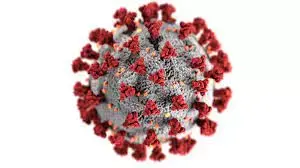In the cohort who were exposed to COVID-19 before vaccines were available, the incidence of type 2 diabetes was four times higher during the first 4 weeks after a diagnosis of COVID-19 than before or in the absence of COVID-19. Type 2 diabetes incidence remained elevated by 64% overall during the second year after diagnosis, was twice as high in people who were hospitalised with COVID-19, and was 11% higher in those not hospitalised with COVID-19. The majority of incident type 2 diabetes after COVID-19 was persistent. The increase in incidence of type 2 diabetes after COVID-19 was markedly attenuated in vaccinated compared with unvaccinated people (1.6 times higher vs 8. 8 times higher during weeks 1–4 after COVID-19 diagnosis). The incidence of type 1 diabetes was elevated only during the first year after COVID-19 diagnosis....
Around 60% of cases of incident type 2 diabetes persisted—defined as being on glucose-lowering medication or having an HbA1c concentration consistent with type 2 diabetes at 4 months after diagnosis—with a similar proportion of persistent type 2 diabetes diagnoses observed in people after COVID-19 (57%) and before or in the absence of COVID-19 (62%). Using a similar definition of persistence, 56% of all cases of newly diagnosed type 2 diabetes persisted up to 1 year post-COVID-19 in a previous study.21 Additionally, 35% of newly diagnosed cases of prediabetes after COVID-19 persisted at 6 months.21 These previous studies were in patients who were hospitalised; we found slightly higher levels of persistence in people who were hospitalised (837 [61%] of 1382) than in those who were not hospitalised (2649 [56%] of 4731).
Absolutely, I've been seeing it in kids and teens. Whole new swaths of kids with newly diagnosed type 1 diabetes we'd never ever seen. Also really ruptured appendicitis at rates that are new.
I knew it! It's good to see the data bore it out too.
Anecdotal, but my partner has developed type 2 after covid, despite vaccination. Also had longcovid. No family history of diabetes.



